It’s true. It is possible to be in two places at once. It’s even possible to be in two different times at once! It’s the fascinatingly complex and incredibly revealing method used by authors in books with two separate timelines. You’ve read them — part of the book is marked “Now” and another part “Then.” Or “Present day” and “Earlier.” Or “Before” and “After.” It’s the method the author uses to illustrate two threads of what will emerge as a single story.
With a dual timeline, the author can reveal two realities. And it allows us, the reader, to have two times that mean “now.”
In a linear book, the author must insert explanation and backstory into the manuscript’s “now” timeline. But multiple timelines let us be immersed in what could be called a “past present.” To feel the importance of events the main character did not know would matter — because when they’re happening, “later” hasn’t happened yet.
They’re familiar, too, because a dual timeline develops the same way our own lives do. Every decision we make and every action we take is based on our history and our experiences — even though the other characters in our life story may not know that.
My books The Murder List and The First to Lie use this structure, with characters in the present and in the past. I wanted the reader to understand not only why decisions are made, but to experience first-hand how betrayal and resentment simmer and — eventually — boil over into action.
Dual timelines also allow readers to know more than the main character does. Readers get the perspective (and fun) of recognizing which events in the past are important, and which will someday affect the character’s motivations and goals. We also understand that the character does not know — and that’s fun too.
Yes, it requires the reader to juggle two unique stories, but smart readers understand that the separate stories are actually one, and the way they coalesce will be the essence of the book. And when those story threads start weaving together, when we see the picture of the tapestry, it can make for a textured and in-depth reading experience.
Whether it’s simply the case of then and now, a shifting time-travel fantasy like Diana Gabaldon’s brilliant Outlander series, or Audrey Niffenegger’s calendar-twisting The Time Traveler’s Wife, a novel with multiple timelines has a depth that’s difficult to achieve in a more linear story.
I know you have some favorites of your own — how do they compare with mine?
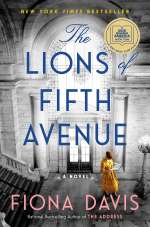
The Lions of Fifth Avenue by Fiona Davis
The Lions of Fifth Avenue
by Fiona Davis
Fiona Davis is such a genius with this — taking a landmark, discovering its true (and fascinating) secrets, and then using them to craft an intriguing page-turner. In this case, the real-life, secret seven-room apartment located within the New York Public Library. Davis creates the family who once lived there, and then the contemporary character who discovers its secrets. Such a terrific book — Davis has a true gift for seamlessly weaving historical fact into contemporary fiction. (Read Claudia Keenan’s review here.)
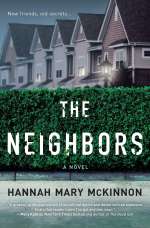
The Neighbors by Hannah Mary McKinnon
The Neighbors
by Hannah Mary McKinnon
Set in the “now” and the “then,” Hannah Mary McKinnon’s The Neighbors is a master class in how the past affects the future. By allowing readers to experience a tragedy from twenty years ago, its repercussions in the present-day are weighted with depth and texture. We not only see secrets being created, but we also see those same secrets — and more — being revealed. I could not turn the pages fast enough. (Yes, we now cohost First Chapter Fun, but I loved this book before I knew her.)
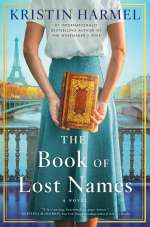
The Book of Lost Names by Kristin Harmel
The Book of Lost Names
by Kristin Harmel
Heartbreaking and thought-provoking, revelatory and important, Kristin Harmel pulls the wrenching past into the present. This is a perfect example of how a dual timeline allows readers to more fully understand history … and how each of our actions can change lives. Inspired by a true story from World War II where a young forger helped Jewish children flee the Nazis. Only she knows the secret of the book of names — and what will she do when the book reappears in her present-day life?
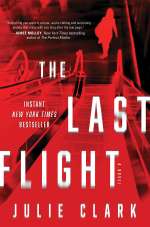
The Last Flight by Julie Clark
The Last Flight
by Julie Clark
Julie Clark’s riveting thriller has two women fleeing their difficult lives. They meet at the airport, and after passing through security, the strangers decide the best way to lose themselves is to become someone else. And just when you think you know what’ll happen — just when you think it’s strangers on a plane — the book takes another route. Set in the before and the after — with each illuminating the other. Do not miss this instant New York Times bestseller. (Read Valerie Taylor’s review and Q&A with Julie Clark here.)

A Distant Heart by Sonali Dev
A Distant Heart
by Sonali Dev
A modern-day Rapunzel set in “present day” and “a long time ago.” A girl, who has been isolated for 12 years in a sterile room in her parents’ Mumbai mansion because she has a terrible illness, becomes friends with a servant boy across a plastic curtain. Later, she’s threatened by something even more terrible, and he’s now the cop protecting her. Love is found and lost and found again, and the present can only be understood by the past. (Read Heather Webb’s review here.)

The Venice Sketchbook by Rhys Bowen
The Venice Sketchbook
by Rhys Bowen
How pivotal is what we leave behind? This is an enchanting book of two Venices — one of 1938 and one of present-day (both glorious and impressively researched) — and the story of two women whose destiny is locked somewhere within that historic and mysterious city. A young woman’s beloved great-aunt Lettie leaves her a sketchbook, three keys and one dying whisper … Venice. Okay, who could resist?
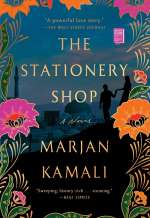
The Stationery Shop by Marjan Kamali
The Stationery Shop
by Marjan Kamali
Bring tissues. Alternating between 2013 and 1953, this gorgeous love story encompasses love and passion, politics and fate. Set in New England and Iran, it’s revelatory — showing the clash of power, culture, food and family. Can we ever regain what is lost, what we mourn, what might have been? It’s as touchingly powerful as any story can be. (Read Jennifer Blankfein’s review and Q&A with Marjan Kamali here.)

11/23/63 by Stephen King
11/23/63
by Stephen King
It’s a juggle when one of the times is 1963 — and a story we already know. Or think we know. Only the brilliant Stephen King could imagine and realize the question so many people must have asked: If you could go back in time and stop the JFK assassination, would you do it? Are you sure? Set in the present and 1963, this is a terrific and captivating tale. “I knew where I was,” a main character says, “the real question was when I was.”





So many good books! I’ve loved the ones I have read, The Lions of Fifth Avenue and 11/23/1963.